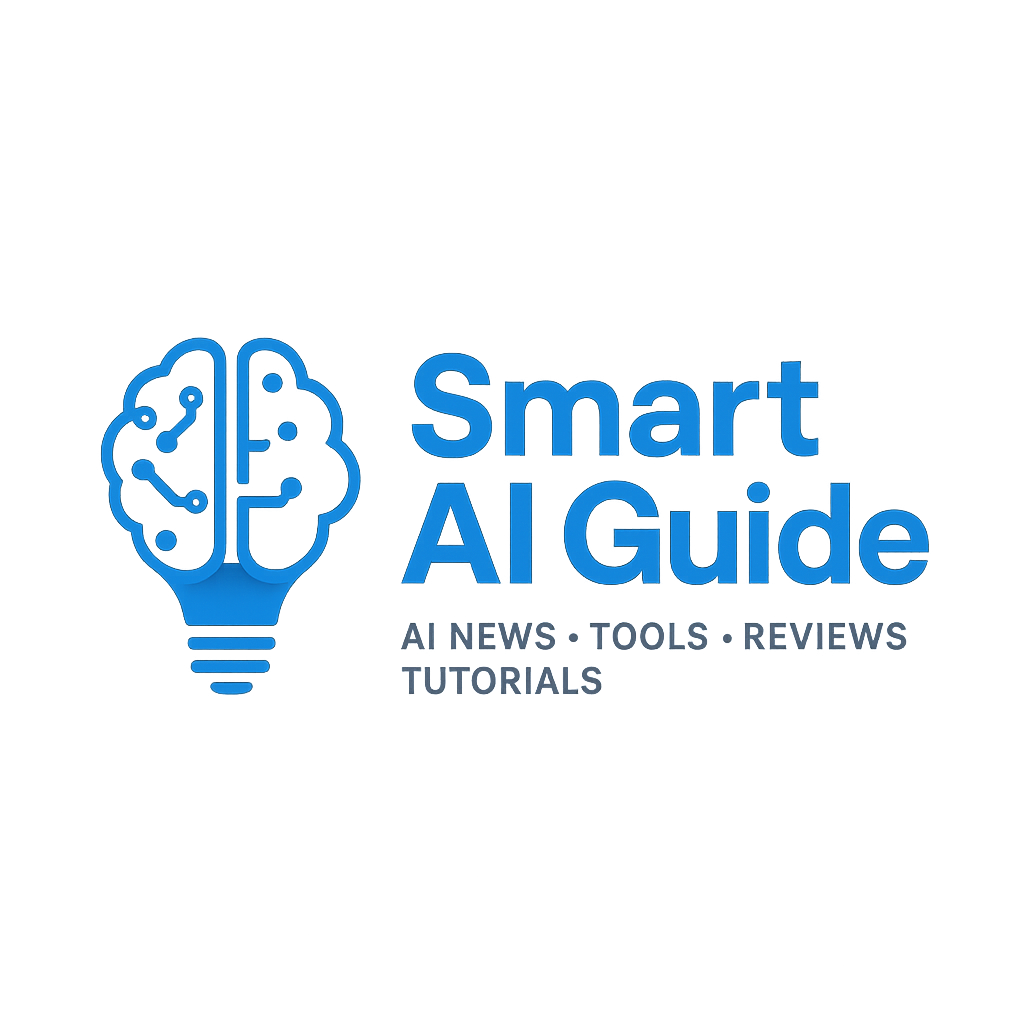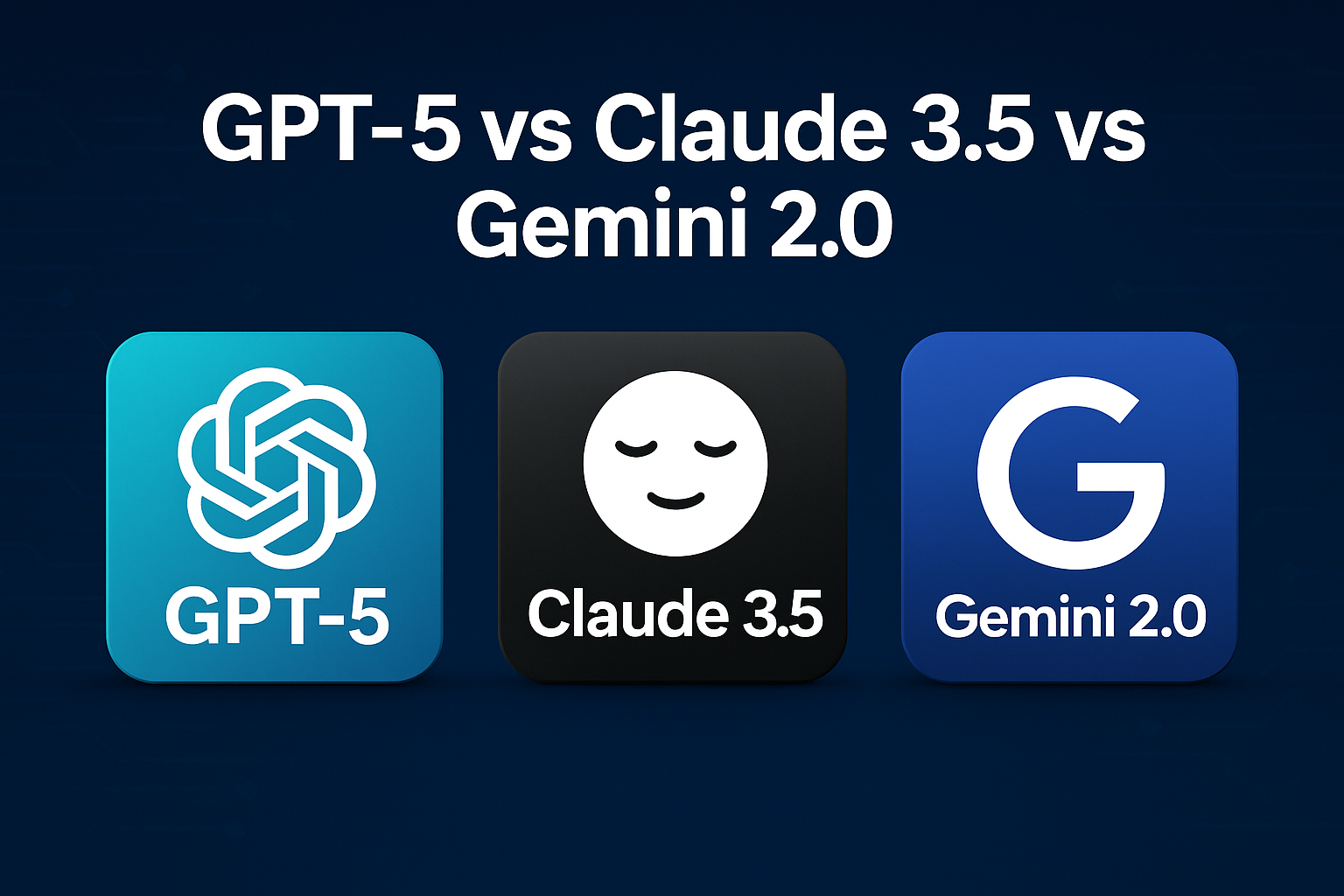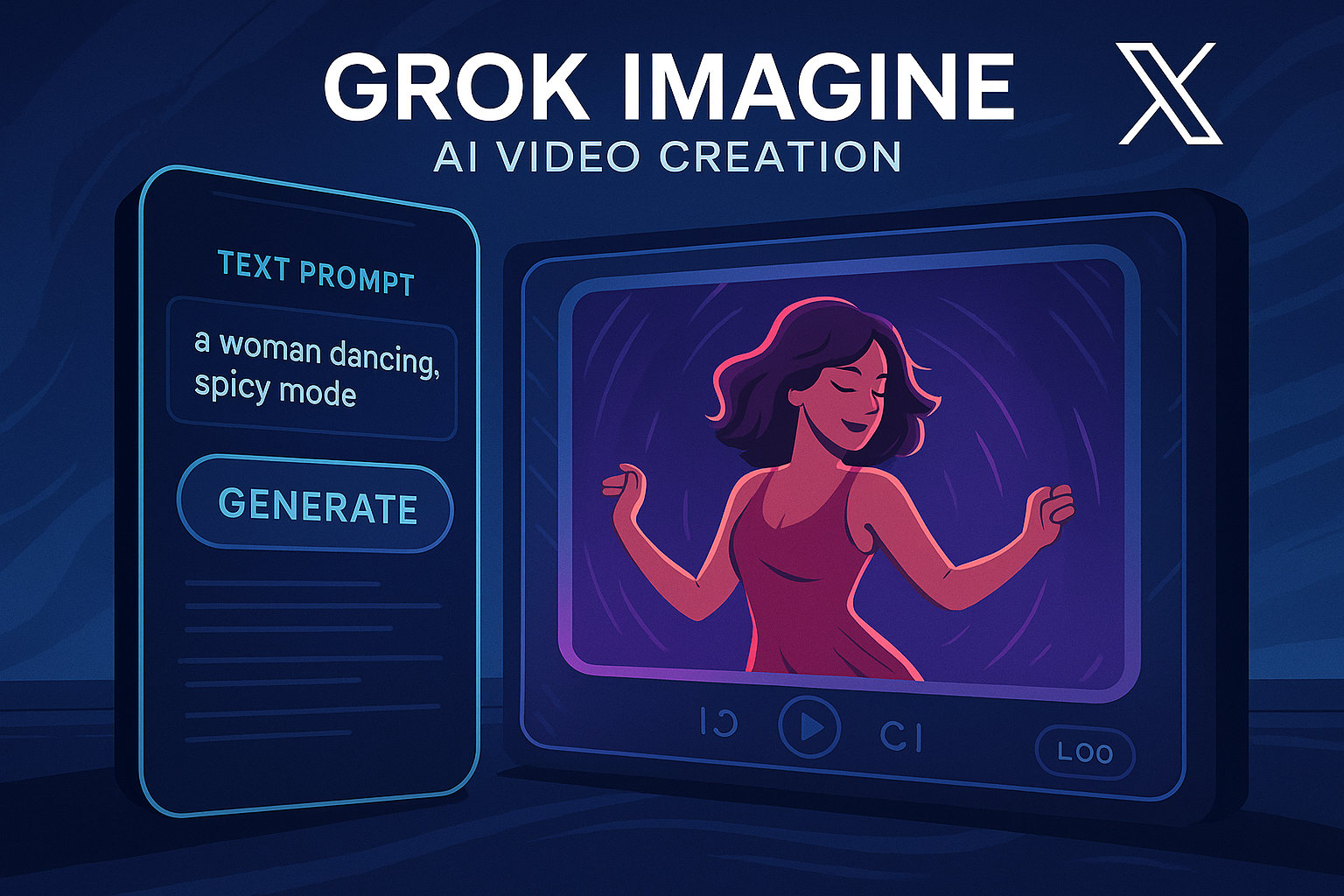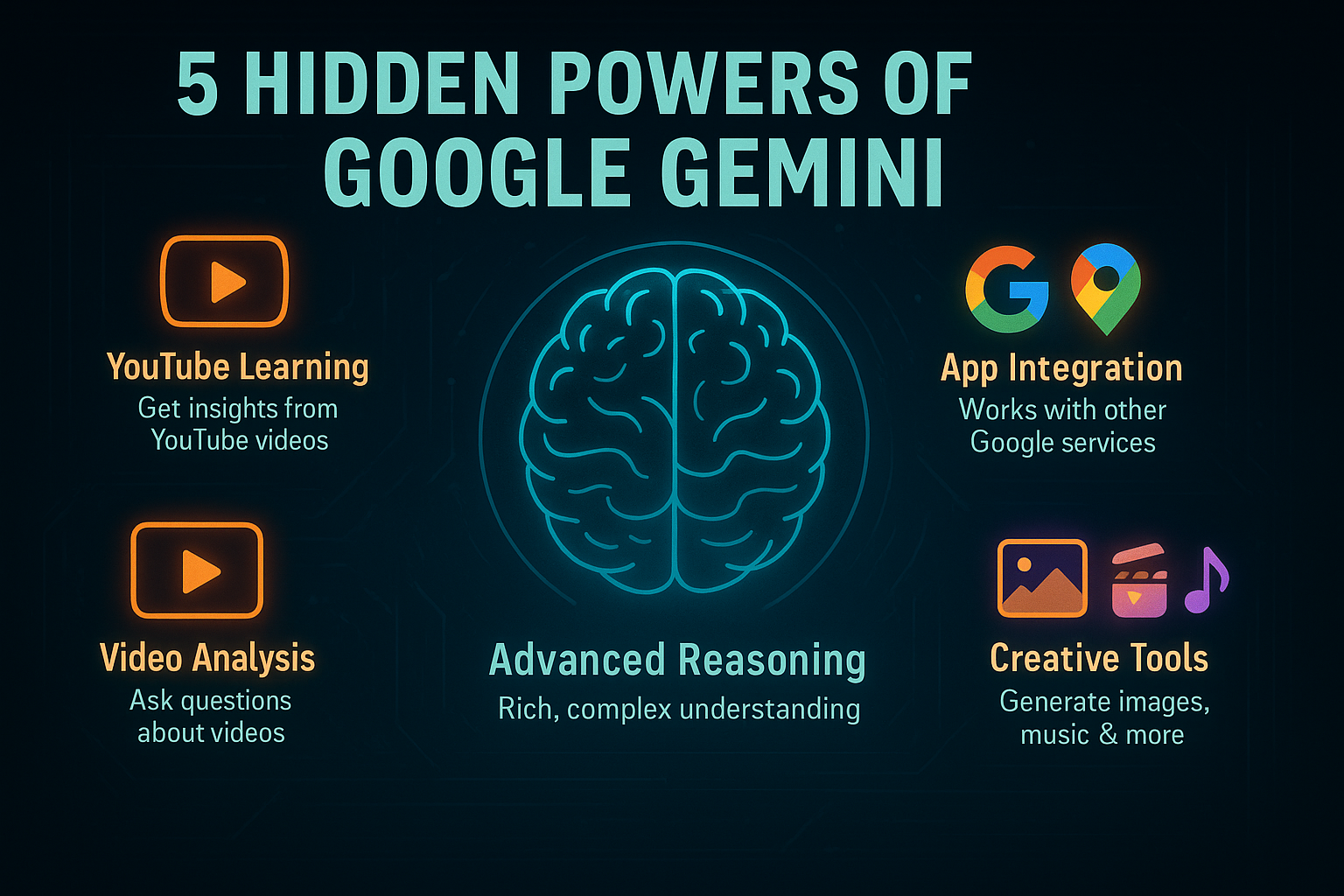GPT-5 vs Claude 3.5 vs Gemini 2.0 — Full Comparison
A practical, developer-first guide to choosing the right frontier model for your team.

TL;DR: If you want the broadest mix of speed, reasoning and tooling breadth, GPT-5 is likely your best general-purpose pick. If your priority is guardrail-heavy enterprise safety and long-form analysis, Claude 3.5 remains a favorite. If you live inside the Google stack and need tight search/data integrations plus strong multimodal capabilities, Gemini 2.0 is compelling. The right choice depends on your workloads, compliance needs, and budget.
How to Use This Guide
This comparison focuses on developer reality: build speed, reliability under pressure, content quality, and integration friction. We avoid hype and concentrate on what helps you ship.
- Rapid prototyping? Skip to Developer Experience & Tools.
- Enterprise policy concerns? See Safety, Governance & Controls.
- Cost-sensitive? Jump to Pricing, Cost Control & Rate Limits.
Model Snapshots (At a Glance)
| Model | Core Strength | Multimodal Scope | Ecosystem Fit | Best For |
|---|---|---|---|---|
| GPT-5 | Balanced: fast responses + strong reasoning + mature tooling | Text, image, audio, video (creator & dev use cases) | Broad (popular SDKs, plug-ins, agents, integrations) | General-purpose apps, code assistants, creative workflows |
| Claude 3.5 | Helpful, careful outputs; long-form analysis & summarization | Text with strong doc analysis; image/audio support varies by tier | Enterprise alignment & safety-first implementations | Policy-heavy orgs, research synthesis, compliant assistants |
| Gemini 2.0 | Deep Google integrations; strong search & data ties | Text, image, video; robust Google Workspace/Cloud links | Best if you’re already on Google Cloud & Workspace | Knowledge apps, data-connected tools, multi-modal UX |
Reasoning & Reliability
When tasks get complex—multi-step logic, planning, refactoring—consistency matters more than flashy demos. In practice:
- GPT-5 aims for a “default workhorse” profile: robust chain-of-thought (internally), steady multi-step execution, and good recovery from ambiguous prompts.
- Claude 3.5 often shines in long-form tasks (policy synthesis, nuanced summaries, careful rewriting) and is favored where cautiousness is a virtue.
- Gemini 2.0 benefits from Google’s retrieval and graph ties; good when your app leans on fresh knowledge, search, and media-heavy tasks.
What to watch for
- Hallucination management: prefer retrieval-augmented generation (RAG) and explicit cite/evidence prompts.
- Task decomposition: use system prompts or agents to enforce planning steps for complex jobs.
- Evaluation: add unit-style checks for outputs (schemas, tests) to catch subtle errors early.
Multimodal Capabilities
All three support multimodal to varying degrees. The practical difference is how much you’ll rely on it.
| Capability | GPT-5 | Claude 3.5 | Gemini 2.0 |
|---|---|---|---|
| Image understanding (UI, charts, docs) | Strong for dev/UX & extraction | Careful & context-aware | Strong, with search/data ties |
| Audio (transcribe/coach/voice) | Low-latency assistance | Available; policy-sensitive | Available; Workspace friendly |
| Video (summaries, shot lists, scripts) | Script/scene planning, outlines | Good for descriptive summaries | Natural fit for media-centric apps |
Developer Experience & Tools
Shipping speed depends on SDK polish, examples, and ecosystem depth.
- GPT-5: broad language SDK coverage, agent frameworks, and plentiful examples. Good default if your stack spans multiple languages/services.
- Claude 3.5: straightforward APIs, steady docs, and partner tooling; popular for internal knowledge assistants and editorial workflows.
- Gemini 2.0: frictionless if you’re already on GCP; Vertex AI and Workspace add-ons reduce glue-code in data/search apps.
Latency & context
For chat-like UX and coding copilots, low latency is crucial; for research/analysis, large context windows matter more. All three offer “fast” tiers and expanded context options; benchmark your prompts with your real documents and repo sizes.
Safety, Governance & Controls
Enterprises will care about auditability, content filters, and policy enforcement.
- GPT-5: mature moderation layers, policy controls, and role-based guardrails; flexible enough for varied content types.
- Claude 3.5: standout for conservative defaults, refusal behavior where appropriate, and clear safety posture; popular with regulated teams.
- Gemini 2.0: strong governance when paired with Google Cloud security, DLP, and admin policies; neat fit for Workspace-wide rollouts.
Pricing, Cost Control & Rate Limits
Token pricing and quotas vary by tier and region and can change. Instead of fixating on nominal per-token price, optimize for unit economics:
- Right-size context: Shorten prompts via schemata & references; summarize state instead of resending it.
- Use RAG: Fetch only the snippets you need; throttle chunk size & count.
- Cache: Cache embeddings and frequent completions; dedupe near-identical prompts.
- Tiering: Route trivial tasks to cheaper models; reserve frontier models for hard steps.
Use-Case Playbook (Quick Picks)
| Scenario | Pick | Why |
|---|---|---|
| General-purpose product assistant (chat, summaries, creation) | GPT-5 | Balanced speed, quality, and rich tooling; versatile default. |
| Policy-heavy internal knowledge bot | Claude 3.5 | Helpful/careful tone, strong long-form synthesis. |
| Search-connected, data-aware apps in Google stack | Gemini 2.0 | Tight Google integrations and Workspace reach. |
| Editorial workflows (rewrite, summarize, style consistency) | Claude 3.5 | Reliable long context behavior; gentle guardrails. |
| Developer copilots & prototyping | GPT-5 | Low-latency coding loops, broad language support. |
| Media-heavy UX (video notes, script assistance) | Gemini 2.0 | Comfortable with media + Google media tools. |
Pros & Cons
GPT-5
- Pros: Balanced performance profile; strong dev ecosystem; versatile multimodal.
- Cons: Frontier tiers can be pricey; careful prompt engineering still required.
Claude 3.5
- Pros: Helpful tone, long-form quality, conservative defaults for compliance-minded teams.
- Cons: Can be more cautious than desired in creative/aggressive tasks.
Gemini 2.0
- Pros: Excellent for Google-centric environments; strong knowledge/search coupling.
- Cons: Best value realized when you already use Google Cloud/Workspace.
Prompt & Architecture Tips
- Structure your asks: Provide roles, objectives, constraints, and success criteria.
- Break down complexity: Use stepwise prompting or agents—plan → fetch → reason → verify → format.
- Automated verification: Validate outputs with schemas, tests, and external tools (linters, parsers).
- Observability: Log prompts/latency/tokens; create dashboards for drift and cost.
Which One Should You Choose?
If you need a single default today, choose GPT-5 for its balance of capability, speed, and ecosystem polish. If your organization prioritizes conservative behavior and long-form synthesis under strict policies, Claude 3.5 may feel like “home.” If your workflows revolve around Google Cloud, search, and Workspace, Gemini 2.0 reduces glue code and shortens integration time.
Best practice: Run a 1–2 week bake-off. Freeze a representative set of prompts, documents, and success metrics; measure quality, latency, cost, and developer happiness. Pick the winner by numbers, not vibes.
Give your business the solid foundation it deserves
If you run an online business, you already know how critical fast, reliable hosting is. Over the years, I’ve tried Hostinger and many other providers — and for speed, cost, and security, Hostinger remains my #1 recommendation.
Whether you’re launching a new site or upgrading your current hosting, Hostinger delivers exceptional performance without breaking the bank. Click here to get started with Hostinger today and give your business the solid foundation it deserves.




